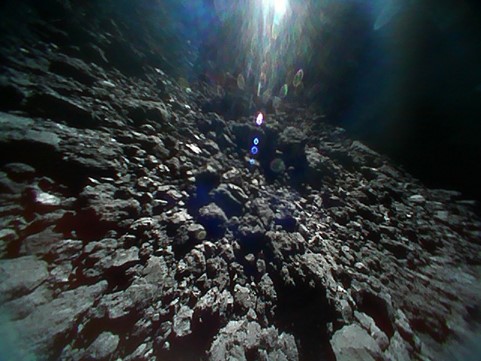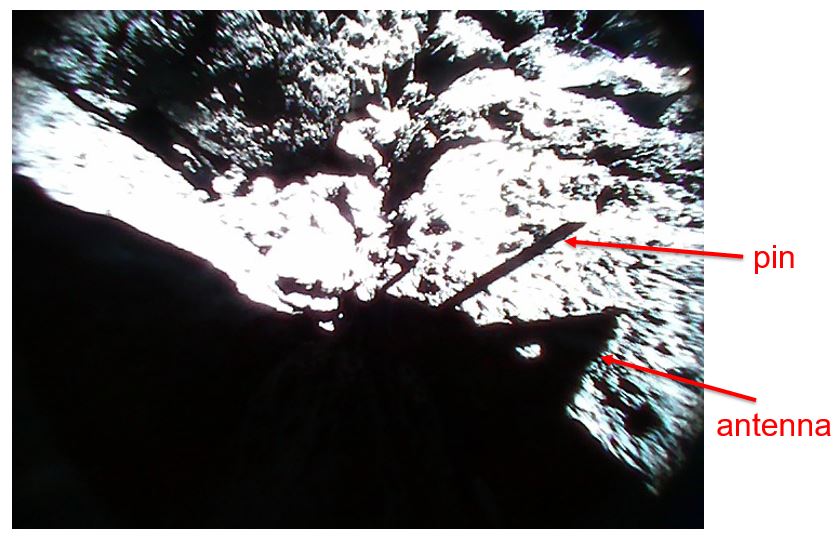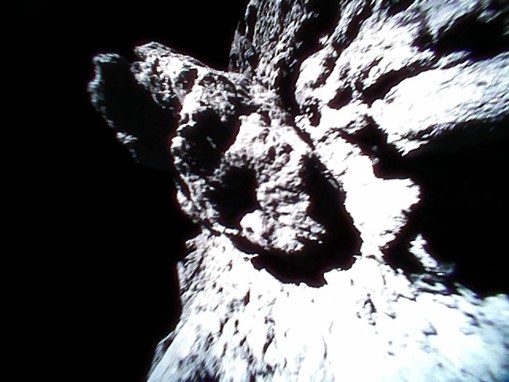Japan's Hopping Rovers Capture Amazing Views of Asteroid Ryugu (Video)
Two tiny, hopping rovers that landed on asteroid Ryugu last week have beamed back some incredible new views of the asteroid's rocky surface.
The Japanese Aerospace Exploration Agency's (JAXA) Hayabusa2 sample-return mission dropped the two nearly identical rovers, named Minerva-II1A and Minerva-II1B, onto the surface of Ryugu on Sept. 21. In a new video from the eyes of Minerva-II1B, you can watch the sun move across the sky as its glaring sunlight reflects off the shiny rocks that cover Ryugu's surface.
"Please take a moment to enjoy 'standing' on this new world," JAXA officials said in a statement released today (Sept. 27). The video was shot over the course of 1 hour and 14 minutes beginning on Sept. 22 at 9:34 p.m. EDT (0134 GMT on Sept. 23). [Japan's Hayabusa2 Asteroid Ryugu Sample-Return Mission in Pictures]

Unlike the rovers that have landed on Mars, these twin rovers have no wheels. Instead of rolling across the asteroid's surface, these are designed to "hop" across the asteroid's surface.
They can hop horizontal distances of up to 50 feet (15 meters), and because Ryugu's gravity is so weak, it can take them up to 15 minutes to land.
The Minerva-II1 rovers have been snapping photos both from the surface of Ryugu and from the air while performing these giant leaps. When the hopping rovers are in motion, the images they take can appear a bit distorted, as you can see in the images from Minerva-II1B above.

The other rover, Minerva-II1A, managed to snap a photo of its shadow in between hops. In the rover's shadow, you can see its antenna and its "pin" — a device that helps provide friction while hopping, protects the rover's solar cells while landing, and measures the asteroid's surface temperature with a built-in thermometer, JAXA officials said in the statement.
Get the Space.com Newsletter
Breaking space news, the latest updates on rocket launches, skywatching events and more!
Another view from Minerva-II1A shows a bizarre, football-shaped rock formation on the surface of Ryugu.

The Minerva-II1 rovers aren't the only spacecraft the Hayabusa2 mission will deploy at Ryugu. In October, it will drop a lander called MASCOT. And in 2019, another hopping rover, called Minerva-II2, will join the club.
Later next year, the Hayabusa2 mothership will descend to the asteroid's surface to collect samples, which it will bring back to Earth sometime in 2020.
Email Hanneke Weitering at hweitering@space.com or follow her @hannekescience. Follow us @Spacedotcom, Facebook and Google+. Original article on Space.com.
Join our Space Forums to keep talking space on the latest missions, night sky and more! And if you have a news tip, correction or comment, let us know at: community@space.com.

Hanneke Weitering is a multimedia journalist in the Pacific Northwest reporting on the future of aviation at FutureFlight.aero and Aviation International News and was previously the Editor for Spaceflight and Astronomy news here at Space.com. As an editor with over 10 years of experience in science journalism she has previously written for Scholastic Classroom Magazines, MedPage Today and The Joint Institute for Computational Sciences at Oak Ridge National Laboratory. After studying physics at the University of Tennessee in her hometown of Knoxville, she earned her graduate degree in Science, Health and Environmental Reporting (SHERP) from New York University. Hanneke joined the Space.com team in 2016 as a staff writer and producer, covering topics including spaceflight and astronomy. She currently lives in Seattle, home of the Space Needle, with her cat and two snakes. In her spare time, Hanneke enjoys exploring the Rocky Mountains, basking in nature and looking for dark skies to gaze at the cosmos.









